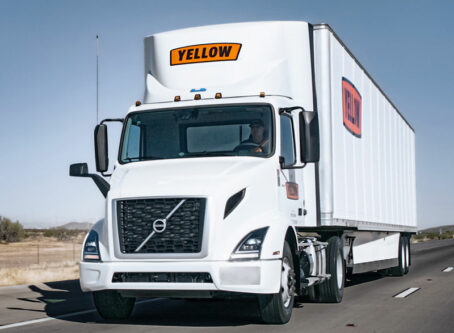‘Driver shortage’ in the U.S. and the U.K.: the same but different
Britain’s current “driver shortage” is like ours: no shortage at all, only tough working conditions and poor pay. There, however, the similarities end.
According to news reports, empty store shelves and long lines for gasoline in the United Kingdom are attributable to a shortage of truck drivers to make the necessary deliveries. Just as in the U.S., many drivers have left trucking for better pay and working conditions. Those jobs had been going to drivers from poorer European Union countries until Brexit, Britain’s withdrawal from the EU, cut off that supply.
To help ease the situation, Prime Minister Boris Johnson will issue 5,000 short-term visas to truck drivers from the European Union to help fill the gap.
It was reliance on the EU for cheaper labor that held down driver wages in the first place as workers from Europe’s poorer countries came to the U.K. to work over the years. The EU’s open borders meant workers from poorer countries, like Romania and Bulgaria, gravitated to more prosperous members, like France, Germany and the U.K. But when the U.K. left the EU as of February 2020, its borders closed, and that source of labor ended. The “driver shortage” has gotten worse since then. Now, the problem has reached crisis proportions.
It hasn’t helped that the current economic surge is causing supply chain overloads or that some training programs for new drivers were shut down during the worst of COVID.
U.K. Transport Minister Grant Shapps defended the temporary visas for foreign drivers even while admitting EU drivers undercut British salaries.
“Poor pay and terrible conditions” for years have led to the need to import HGV (Heavy Goods Vehicle) drivers, Shapps said on Times Radio as reported by Bloomberg.
The long-term solution to the driver shortage problem is higher wages, said another government official.
What’s familiar, of course, are the poor conditions and low pay.
What is less familiar is a government that appears to recognize the problem and is willing to at least state the obvious end solution. Our government barely acknowledges the problem at all, remaining silent as the American Trucking Associations loudly proclaims a nonexistent driver shortage to wrest goodies like CDL school support and 18-year-old interstate drivers from Congress.
Instead of a pool of foreign drivers, the U.S. has a recruiting industry that attracts hundreds of thousands of would-be drivers every year. Most leave within the first year or so. But they don’t turn in their CDLs on the way out. The drivers who quit the industry remain CDL holders and are thus part of a much larger driver pool than the ATA will acknowledge.
The U.K. does acknowledge the pool of drivers who’ve left the industry. In fact, according to Bloomberg, the government is sending letters to everyone with an HGV license inviting them back. Short of a big pay increase, good luck with that.
Some claim the U.K.’s temporary visa program is too small to have a serious impact on the current situation. The program is limited to 5,000 drivers and then only until this Christmas. In addition, the program limits the drivers to food and fuel deliveries. Other companies are on their own. The Road Haulage Association, the U.K. equivalent of the ATA, estimates Britain needs 100,000 drivers to solve the current crisis. LL









